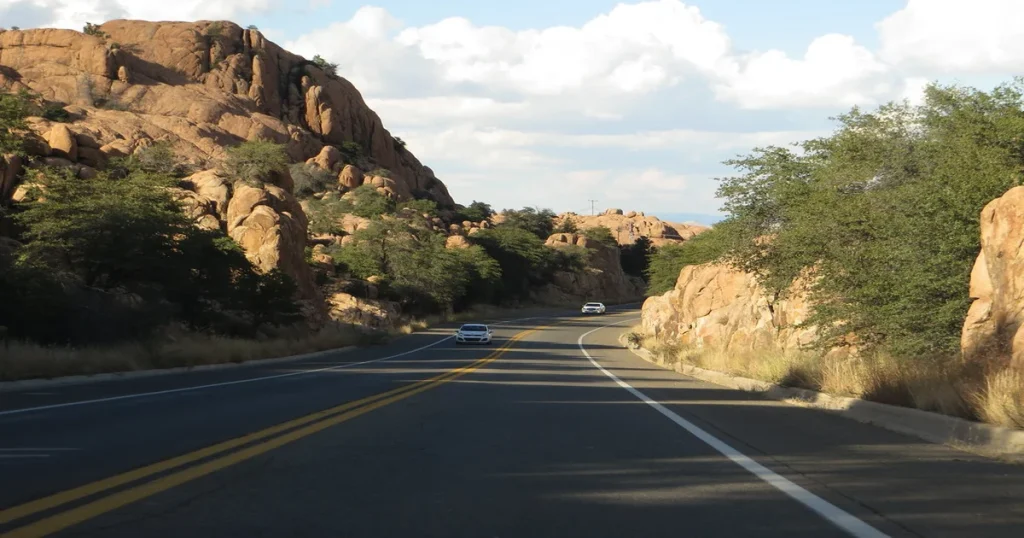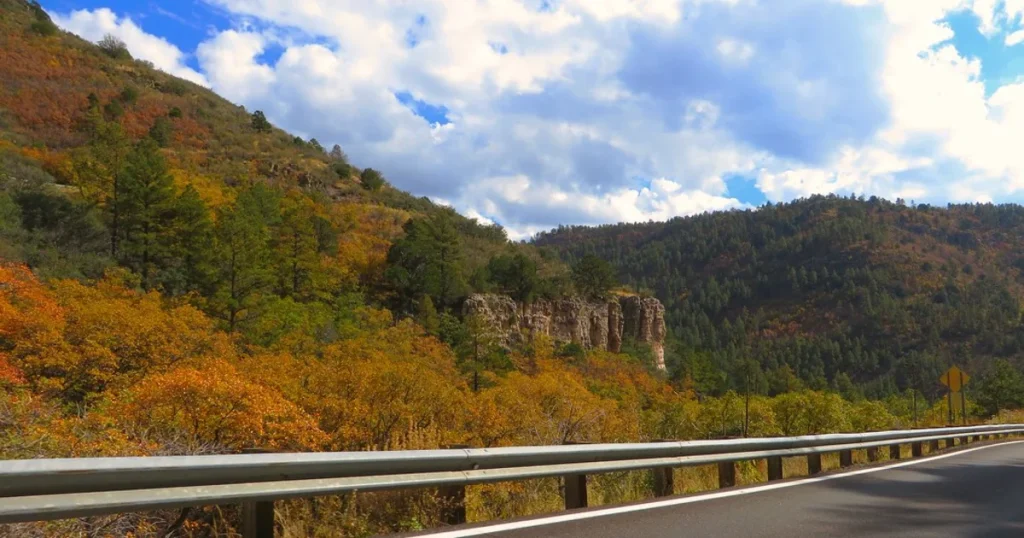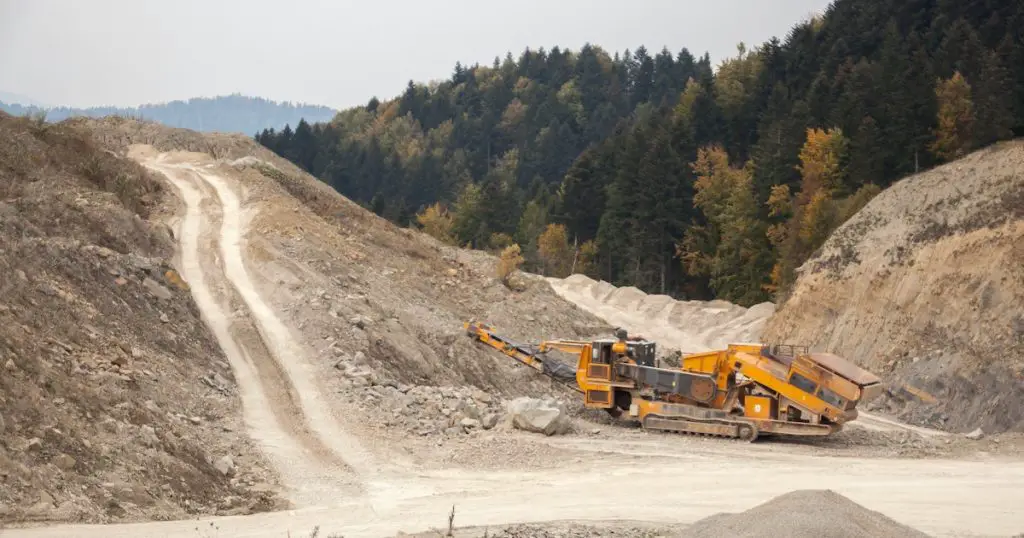Prescott, a picturesque town in Arizona, is not only celebrated for its stunning landscapes but also for its compelling mining history. The historic mining routes and trails in Prescott weave a tale of ambition, discovery, and community.

As we journey through these storied pathways, you’ll uncover the profound impact they’ve had on shaping both the town’s landscape and its cultural heritage.
The Early Beginnings
Mining has always played a pivotal role in the history of Prescott. Before the gold rush and booming mining towns, indigenous communities recognized the area’s rich mineral wealth.
The Native American tribes of the region, such as the Yavapai, were among the earliest miners. They utilized basic tools and techniques, paving the way for the subsequent waves of miners who would flood the area in search of fortune. While their methods were rudimentary, the impact they left on the mining routes of Prescott remains evident to this day.
The allure of gold, however, truly thrust Prescott into the limelight. Reports of significant discoveries led to a rush of prospectors, dreaming of wealth and a better life. The foundations of the trails and routes we recognize today were laid during this frenetic era of exploration and expansion.
Major Mining Routes
Prescott’s major mining routes stand as a testament to the town’s golden age of discovery and enterprise. These iconic pathways, once bustling with miners eager to stake their claim, encapsulate the dreams and struggles of a bygone era.
Each route has its unique narrative, interwoven with tales of significant finds, pioneering spirit, and community building. Today, they serve not only as a physical reminder of Prescott’s rich mining legacy but also as popular destinations for those keen on retracing the steps of the town’s industrious forebears.
The Hassayampa Gold Route
The Hassayampa River, winding through Prescott, was once synonymous with gold. Prospectors flocked to its shores, hoping to sift the shimmering metal from its waters. The river’s history is laden with tales of vast fortunes made overnight and dreams dashed just as swiftly. For many, the Hassayampa represented both hope and heartbreak.
Modern explorers, though not looking for gold, are drawn to the scenic beauty of the Hassayampa Gold Route. Nature has reclaimed much of the mining infrastructure, but a keen eye can still spot remnants of the past – old equipment rusting away and cabin ruins hidden among the trees. This route offers a hauntingly beautiful blend of nature and history, urging visitors to reflect on its storied past.
The Big Bug Creek Path
Big Bug Creek, with its intriguing name, beckoned miners with the promise of rich mineral deposits. The area around the creek witnessed the rise and fall of mining operations, with some achieving significant success. Tales of prosperous ventures and tragic missteps are embedded in the very soil of this route.

Today, the Big Bug Creek Path remains a popular trail for history enthusiasts and hikers alike. The undulating terrain, interspersed with markers of its mining heritage, provides a unique blend of natural beauty and history. As you walk these trails, it’s hard not to feel a connection to the intrepid souls who once tread the same ground, chasing their dreams.
The Lynx Creek Route
Lynx Creek, another significant player in Prescott’s mining saga, has a wealth of tales waiting to be uncovered. Rich in placer gold, it became a focal point for many mining ventures. The banks of Lynx Creek witnessed both the exhilaration of significant finds and the despair of failed undertakings.
Today, much of the Lynx Creek Route is accessible to the public, offering a snapshot into the past. The relics of old mining equipment and dilapidated structures provide a tangible link to a bygone era. Modern-day visitors can not only enjoy the natural beauty but also immerse themselves in the region’s rich history, making it a must-visit for anyone in Prescott.
Secondary and Lesser-Known Trails
Beyond Prescott’s primary mining routes lie a myriad of lesser-known trails, each holding its unique tales of ambition, adversity, and discovery. These hidden gems, often overshadowed by the more prominent routes, played their own crucial roles in the mining tapestry of the area.
While they might not have the same widespread recognition, their contribution to Prescott’s mining history is undeniable. Exploring these secondary trails offers a deeper, more nuanced understanding of the region’s mining heritage, blending the allure of untold stories with the serenity of undisturbed landscapes.
The Groom Creek Route
Located south of Prescott, Groom Creek, though lesser-known, played a significant role in the region’s mining activities. It saw a mix of successes and failures, with many miners trying their luck in this picturesque locale.
Over time, Groom Creek has transformed into a serene getaway, offering both natural beauty and a dose of history.
The Walker Road Trail
Named after the legendary prospector Joseph Walker, this trail is steeped in history. Walker, in his relentless quest for gold, left an indelible mark on the region.
The trail that bears his name serves as a testament to his pioneering spirit and the many others who followed in his footsteps.
The Granite Dells Passageways
These stunning formations, characterized by their unique weathered granite structures, also hide a rich mining history. While not as prominent as some of the major routes, the Granite Dells played their part in Prescott’s mining story.

Today, they stand as a testament to the passage of time, with nature and history intertwining in a captivating dance.
Transportation and Infrastructure
The success of mining operations wasn’t solely dependent on the mineral finds; transportation and infrastructure were equally critical. As the mining activities in Prescott expanded, so did the need for efficient transportation networks.
The introduction of the railroad revolutionized the mining industry in Prescott. Trains facilitated the rapid movement of minerals and goods, linking Prescott to larger markets and ensuring its prosperity. Historical records and sites such as the Sharlot Hall Museum provide glimpses into the profound impact the railroad had on the region’s mining history.
Alongside the railroads, innovations in mining equipment began to emerge. The once manual and labor-intensive processes started seeing mechanization. This not only increased efficiency but also transformed the landscape of the mining routes.
However, with progress came challenges. The rugged terrain posed significant obstacles for transportation. Miners had to be innovative, developing unique solutions to navigate the challenging Prescott landscape. Their ingenuity remains evident in the remnants of old transportation networks scattered throughout the region.
Impact on Communities
The mining boom undoubtedly shaped Prescott’s socio-economic landscape. Boomtowns emerged around successful mining operations, bringing with them a wave of migrants seeking fortune. These towns, bustling with activity, became centers of commerce, culture, and community.
However, as with many mining towns, their fates were closely tied to the mines they surrounded. As operations dwindled or closed, many of these towns faced decline, with some eventually becoming ghost towns.
The trails and routes also played an essential role in fostering community development. They facilitated movement, trade, and cultural exchange. Over time, a melting pot of cultures emerged along these routes, each contributing to the rich tapestry of Prescott’s heritage.
Modern-day Exploration and Tourism
Prescott’s mining routes, while reminiscent of the past, continue to hold relevance today. They’ve transformed into popular spots for hiking, exploration, and historical tours.
Sites like the Prescott National Forest offer trails that take visitors through areas rich in mining history. These trails, marked with information boards and interpretative signs, provide a deep dive into the region’s past.
Museums, too, play a pivotal role in preserving and showcasing Prescott’s mining legacy. These institutions, through exhibits and guided tours, transport visitors back in time, offering a glimpse into the lives of the miners and the communities they built.
Preservation Efforts and Challenges
Prescott’s mining routes, though rich in history, face the ever-present challenge of time and neglect. Preservation efforts, both at a local and national level, are crucial in ensuring these sites remain Preservation isn’t merely about maintaining old structures or marking historic sites.

It’s about understanding and valuing the stories these places hold, ensuring they continue to enlighten and inspire. Local organizations, often in collaboration with state and national agencies, play a vital role in these endeavors. Initiatives like those by the Preservation of Historic Arizona have been instrumental in safeguarding key sites.
Yet, challenges persist. Natural elements, vandalism, and at times, development pressures pose significant threats to these historic sites. Balancing the need for modernization with preservation is a delicate task. Still, the dedication of the community, historians, and preservationists ensures that these sites are not just relics of the past but living monuments to Prescott’s rich heritage.
Success stories abound. Trails once forgotten have been restored, not just for their historical significance but also for their natural beauty. These rejuvenated routes now serve as popular hiking trails, blending education with recreation in a unique manner.
Frequently Asked Questions:
In this section, we will be delving into some of the most common inquiries and curiosities that surround our topic.
When did mining in Prescott first begin?
Mining in Prescott dates back hundreds of years, with Native American tribes like the Yavapai being among the earliest miners. However, the significant gold rush era, which shaped much of Prescott’s mining history, began in the mid-19th century.
What were the primary minerals and metals mined?
Gold was the primary draw for many miners. However, over time, other minerals like silver, copper, and lead also played a role in Prescott’s mining narrative.
Are these historic routes safe for modern-day exploration?
Most of the major mining routes have been adapted for modern-day exploration. While they are safe for visitors, it’s always advisable to stay on marked trails, respect preservation efforts, and be aware of the natural surroundings.
How can I support preservation efforts in the area?
Supporting local museums, volunteering with preservation organizations, and simply educating oneself and others about the importance of these historic sites can go a long way in aiding preservation efforts.
What are the top recommended sites for tourists interested in mining history?
The Hassayampa Gold Route, Big Bug Creek Path, and the Lynx Creek Route are must-visits. Additionally, museums like the Sharlot Hall Museum offer in-depth insights into the mining era.
Summary
Prescott’s historic mining routes and trails are more than just pathways through the landscape; they are pathways through time. Each trail tells a story, echoing the dreams and determination of those who once walked them.
As we tread these routes, we’re reminded of the richness of history, the importance of preservation, and the enduring spirit of discovery that is so deeply woven into Prescott’s fabric.



Leave a Comment
You must be logged in to post a comment.